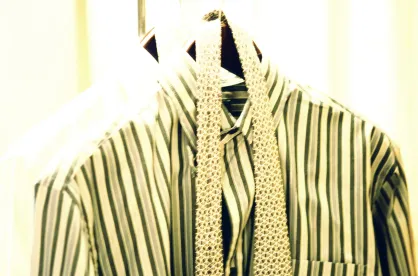On August 29, 2022, the National Labor Relations Board (“NLRB” or the “Board”) issued a decision in Tesla, Inc. regarding dress code policies that further the Biden Board’s efforts to remake NLRB policy. This decision has big implications for employers that maintain appearance, dress code, and uniform policies. The Board’s decision now firmly establishes that any employer’s uniform or dress code policy is inherently unlawful if it can be read “in any way” to prohibit employees from wearing union insignia unless an employer can prove that its policy is justified by special circumstances. It is irrelevant whether the employer’s policy has ever been applied to prohibit union t-shirts or the employer actively permits union buttons or other insignia. Further, and critical to a broader understanding of the implications of this decision, it is also irrelevant whether the workplace is unionized or even being actively unionized.
The Board’s decision purports to be a return to the standard announced in Republic Aviation, 324 US 793 (1945), and described in dicta in the 2010 NLRB decision Stabilus, 355 NLRB (2010). The Tesla decision explicitly overturned the Trump Board’s two-year-old decision in Wal-Mart Inc., 368 NLRB No. 146 (2019), and retroactively applied its decision.
Background
In Republic Aviation, the Supreme Court held that Section 7 of the National Labor Relations Act (NLRA) protects the right of employees to wear union insignia at work. In that case, an employer permitted employees to wear union logos but did not permit wearing pins that said “steward.” The Supreme Court approved the Board’s determination that “the right of employees to wear union insignia at work has long been recognized as a reasonable and legitimate form of union activity, and the respondent’s curtailment of that right is clearly violative of the [NLRA].” (Id. at fn. 7.) The Court acknowledged the delicate balance called for, “in working out an adjustment between the undisputed right of self-organization assured to employees under the [NLRA] and the equally undisputed right of employers to maintain discipline in their establishments. . . . Opportunity to organize and proper discipline are both essential elements in a balanced society.” (Id. at 798.)
In the more than 75 years since the Republic Aviation decision, the Board established what has come to be known as the “special circumstances test,” that is, where an employer prohibited union insignia as part of a company policy or in response to employee action, the employer could justify such a ban if it showed “special circumstances,” such as safety concerns or maintaining a customer-facing public image.
The Tesla Case
At issue in Tesla was a facially neutral dress code that mandated “all Production Associates and Leads wear the assigned team wear,” which consisted of a black t-shirt with a company logo and a specific type of black pants. The policy further stated that employees could wear all-black clothing that posed no safety risks.
The Board interpreted Tesla’s policy to mean employees may “wear only black team wear shirts with [the Company] logo – or on occasion, with their supervisor’s permission, all-black shirts – and thus prohibits them from wearing union shirts in place of the required team wear or other approved shirts. As a result, the team-wear policy interferes with production associates’ Section 7 right to display union insignia. Accordingly, under Republic Aviation and its progeny, the team-wear policy is presumptively invalid, and [the Company] has the burden to establish special circumstances that justify its interference with production associates’ protected right to display union insignia.” Tesla at 7.
The Board reached this conclusion by looking only at the four corners of the dress code policy. Of note, the Tesla policy had been interpreted by Tesla to only permit black company logo shirts or plain black shirts (and thus not union shirts), but the company did allow employees to wear union stickers. The Board expressly held that such a distinction made no difference, holding that “an employer is not free to restrict one statutorily protected means of communication among employees, so long as an alternative means remains unrestricted.”
The Tesla decision overruled the two-year-old Wal-Mart decision. Wal-Mart attempted to create a distinction between an as-applied challenge to a dress code and a facial challenge to a dress code policy. The Wal-Mart decision created space for an employer to maintain a facially neutral, nondiscriminatory dress code that requires employees to wear specific apparel but does not prohibit the display of union insignia. The Wal-Mart decision held that such a facially neutral dress code did not have a presumption of illegality.
The Board in Tesla rejected and overturned the Wal-Mart approach to dress codes. As the dissent points out, the result of this holding is that no employer may lawfully maintain any dress code or apparel policy unless that employer can demonstrate special circumstances.
The criticism often leveled at the Board’s special circumstances test is that the Board routinely rejects the employer’s justifications. The dissent in Tesla uses, as an example, a hypothetical company dress code long ago established that requires employees working at an employer’s facility to wear blue polos, possibly for no other reason than the CEO likes the look. Under the Board’s approach, such a policy is unlawful because (1) it de facto prohibits employees from wearing union shirts (even if the employees can wear union stickers or hats) and (2) the company cannot readily meet the current articulated special circumstances tests. The blue polo is an arbitrary CEO decision, not related to maintaining a customer-facing public image or to safety or damage to machinery or products. Under the test articulated in Tesla, even if the company could show that employees regularly wore union pins on their blue polos, the blue polo dress code would be de facto unlawful because it precludes employees from wearing union t-shirts.
For employers with dress codes that have been analyzed under the NLRB’s special circumstances doctrine in the past, this decision will have only a slight impact on you. The same special circumstances will continue to apply. For example, a hospital’s prohibition on solicitation or union activity in patient care areas, or where a uniform is an inimical part of a company’s brand, is still the law of the land. The frustration for many employers will be that the only way to know for certain if your dress code meets the special circumstances test is to go through the NLRB process, articulate your special circumstances to the Board, and have your day in court. The NLRB has abandoned any effort to advise employers on how they may craft a uniform policy and avoid litigation. To that end, this Tesla decision is expected to be the first of many NLRB decisions targeted at employer handbooks.





 />i
/>i

